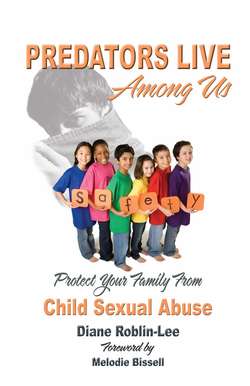Читать книгу Predators Live Among us - Diane Roblin Lee - Страница 14
На сайте Литреса книга снята с продажи.
Economic factors
ОглавлениеWhen we fail in our efforts to protect children, there is a cost beyond the trauma to the individual and his or her family and friends. Economic costs for child welfare services as well as the indirect costs of the long-term consequences of abuse, take a toll on the economy of individuals, families and nations.
Sadly, the understanding of child sexual abuse as a priority has failed to reach the budget pencils of those who hold the purse strings.
A 2001 study by the Edna McConnell Clark Foundation used federal data to determine annual direct costs of all child abuse in the United States, including medical, police, welfare and court costs. The figure was 24 billion dollars. With an estimated 20 percent of abuse being sexual in nature, the known U.S. federal costs were, at that time, around five billion dollars. With numbers constantly climbing and so many cases unreported, the numbers are obviously much higher—to say nothing of the familial costs of dealing with an abused child and the costs to the business world for workers who continue to suffer with emotional baggage.
According to Dr. Paul Fink,
“Child sexual abuse is a preventable health problem that has been allowed to spread, unabated, due to scientific and social neglect.”16
Dr. Frank Putnam, researcher at the National Institute for Mental Health, in his article, Why is it so Difficult for the Epidemic of Child Abuse to be Taken Seriously? observed,
“We find an incidence rate for child abuse and neglect that is about ten times as high as the incidence rate for all forms of cancer…. There is a multi-billion-dollar research base reliably renewed on an annual basis for cancer treatment and prevention. Nothing remotely similar to this exists for child abuse and neglect.”
It’s probably worth noting that there’s no pill that the mammoth drug companies could produce to stop child abuse or its effects. As a crisis control driven society, rather than a prevention oriented society, there may be money to be saved, but none to be made. Money spent on preventing sexual child abuse would not produce any direct financial return on investment.
In a commentary, Dr. James Mercy, a researcher with the Center for Disease Control and Prevention observed:
“Imagine a childhood disease that affects one in five girls and one in seven boys before they reach 18 (Finkelhor & Dziuba-Leatherman, 1994): a disease that can cause dramatic mood swings, erratic behavior, and even severe conduct disorders among those exposed; a disease that breeds distrust of adults and undermines the possibility of experiencing normal sexual relationships; a disease that can have profound implications for an individual’s future health by increasing the risk of problems such as substance abuse, sexually transmitted diseases, and suicidal behavior (Crowell & Burgess, 1996); a disease that replicates itself by causing some of its victims to expose future generations to its debilitating effects.
“Imagine what we, as a society, would do if such a disease existed. We would spare no expense. We would invest heavily in basic and applied research. We would devise systems to identify those affected and provide services to treat them. We would develop and broadly implement prevention campaigns to protect our children. Wouldn’t we?
“Such a disease does exist—it’s called child sexual abuse. Our response, however, has been far from the full-court press reserved for traditional diseases or health concerns of equal or even lesser magnitude. Perhaps the perception of sexual abuse as a law enforcement problem or our discomfort in confronting sexual issues contributes to our complacency. Whatever the reason, we have severely underestimated the effects of this problem on our children’s health and quality of life.”17
